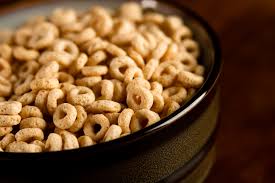Hormel Foods (HRL +1.08%) and General Mills (GIS +0.77%) are both often mentioned among investors' favorite dividend stocks. The two hail from the defensive packaged food sector, which tends to weather recessions well since consumers buy items like cereal and peanut butter no matter how the economy is doing.
Both companies have a long history of paying dividends; Hormel is a Dividend Aristocrat, having raised its quarterly payout every year for 51 years in a row. General Mills, meanwhile, has paid an uninterrupted dividend for 118 years, though it is not a Dividend Aristocrat because it's only increased it for 13 consecutive years, not the 25 required to be an Aristocrat.

Image source: Getty Images.
Of the two stocks, the Cheerios-maker offers the better dividend yield, at 3.4%, against 1.8% for Hormel, but there are a few reasons the Spam-maker is the better choice for dividend investors.
1. Stock performance
Over the last five years, Hormel shares have easily outperformed those of General Mills, essentially tripling their growth, as the chart below shows.
Hormel's growth has been driven by a key acquisition in each of the last five years, including Wholly Guacamole, Skippy, Muscle Milk, Applegate, and Justin's. General Mills' biggest acquisition in recent years, meanwhile, was the $820 million it shelled out for Annie's, the bunny-themed maker of mac-and-cheese and other organic products.
As the saying goes, past performance is not a guarantee of future returns, but Hormel's management has more aggressively pursued acquisitions and looks ready to do some more with just $250 million in debt on its books. General Mills, meanwhile, has its hands full with current challenges in its cereal portfolio and with Yoplait.
2. A lower payout ratio
Hormel may not offer as high of a dividend yield as General Mills, but as a corollary, the stock has a much lower payout ratio. Hormel pays out just 34.5% of its profits as dividends, compared to General Mills, which has a payout ratio of 69.6%. Hormel's lower ratio not only means that the company can more easily raise its dividend payout, but it also gives the company more profits to spend to elsewhere, such as on acquisitions, which will be key for future growth.
3. Better dividend growth
Because of Hormel's stronger profit growth, stock performance, and lower payout ratio, the company has raised its dividend much more aggressively. Late last year, it hiked its dividend by 17%, and the year before, it raised it by 16%. General Mills' last increase was about 9% over two quarters. As the chart below shows, Hormel's dividend payouts have more than doubled over the last five years, while General Mills' have been significantly slower.
GIS Dividend data by YCharts.
That trend should continue as Hormel has been growing its profits faster than General Mills and has more room to raise its dividend since its payout ratio is lower.
4. Better brand positioning
General Mills' core brands like Yoplait, Cheerios, and other cereal brands have struggled lately. Cereal has fallen out of favor as consumers have begun to see it as unhealthy, and as the popularity of the low-carb diet has grown. The company's Yoplait brand did not respond well to the rise of Greek yogurt, losing market share to Chobani.
General Mills acquired EPIC provisions early last year, a maker of meat snacks, but that move underscores the strength of protein-based snacks and products in recent years, which is Hormel's specialty. The company has traditionally focused on protein-centric foods such as Spam, Dinty Moore beef stew, and Jennie-O turkey. Its recent acquisitions have revolved around protein as it's taken over nut butters like Skippy and Justin's, the protein shake brand Muscle Milk, and Applegate, an organic deli meat brand.
Sales of those types of foods have continued to grow as they are on trend with changing eating habits. General Mills, on the other hand, has more carb-heavy brands and is likely to see consumers continue to turn away from those in the coming years. That means Hormel will be the better dividend stock for long-term investors, even if its yield is currently lower.









